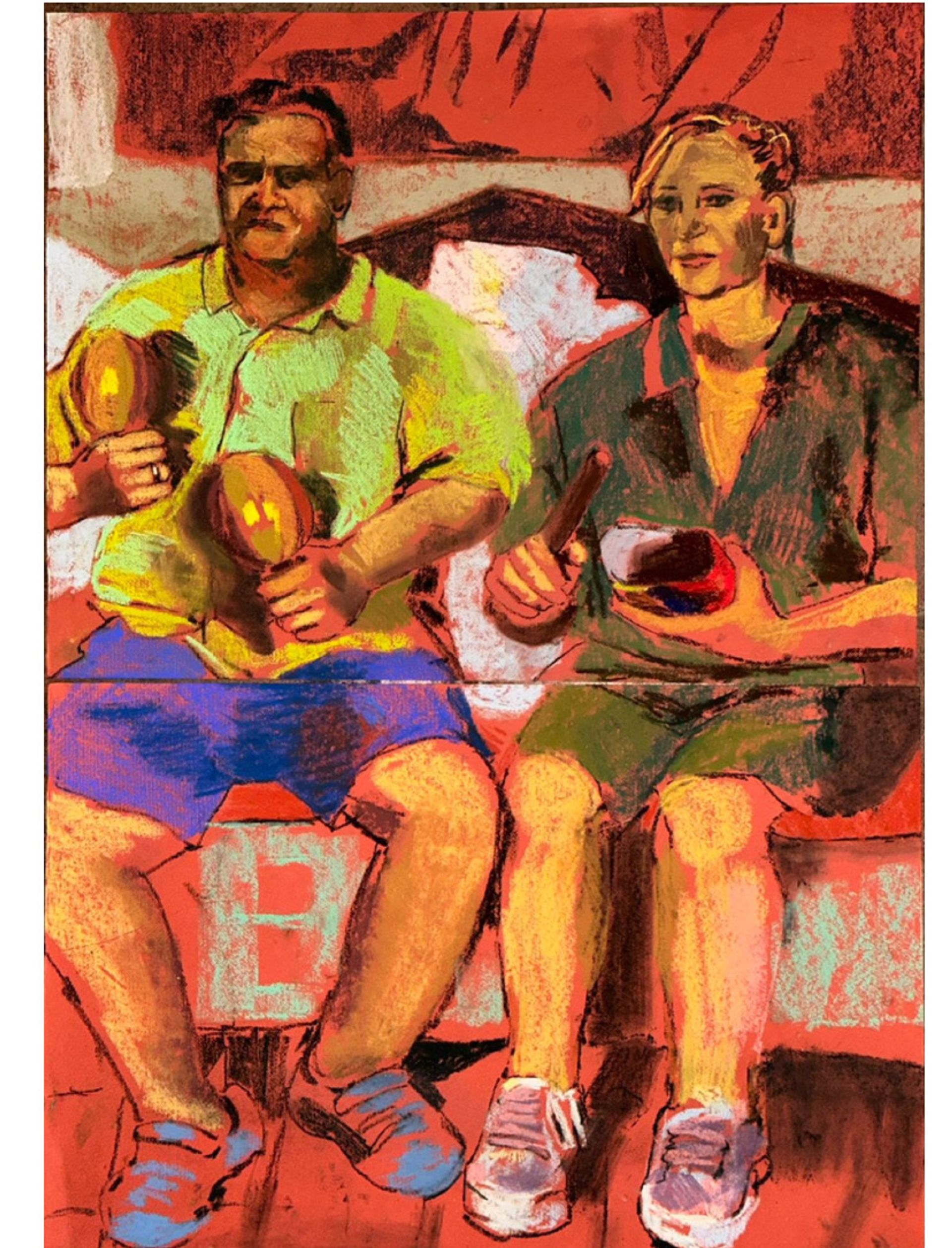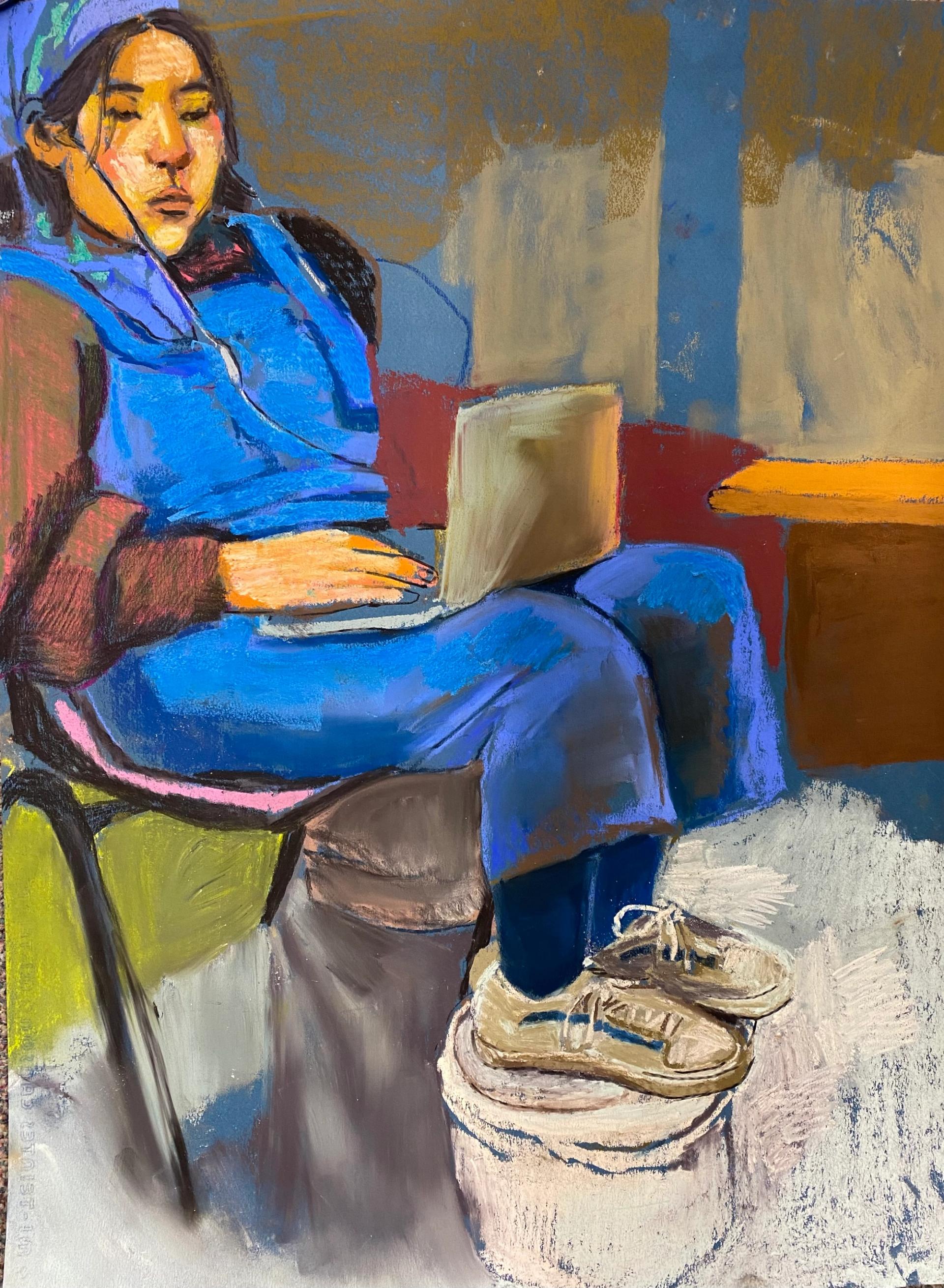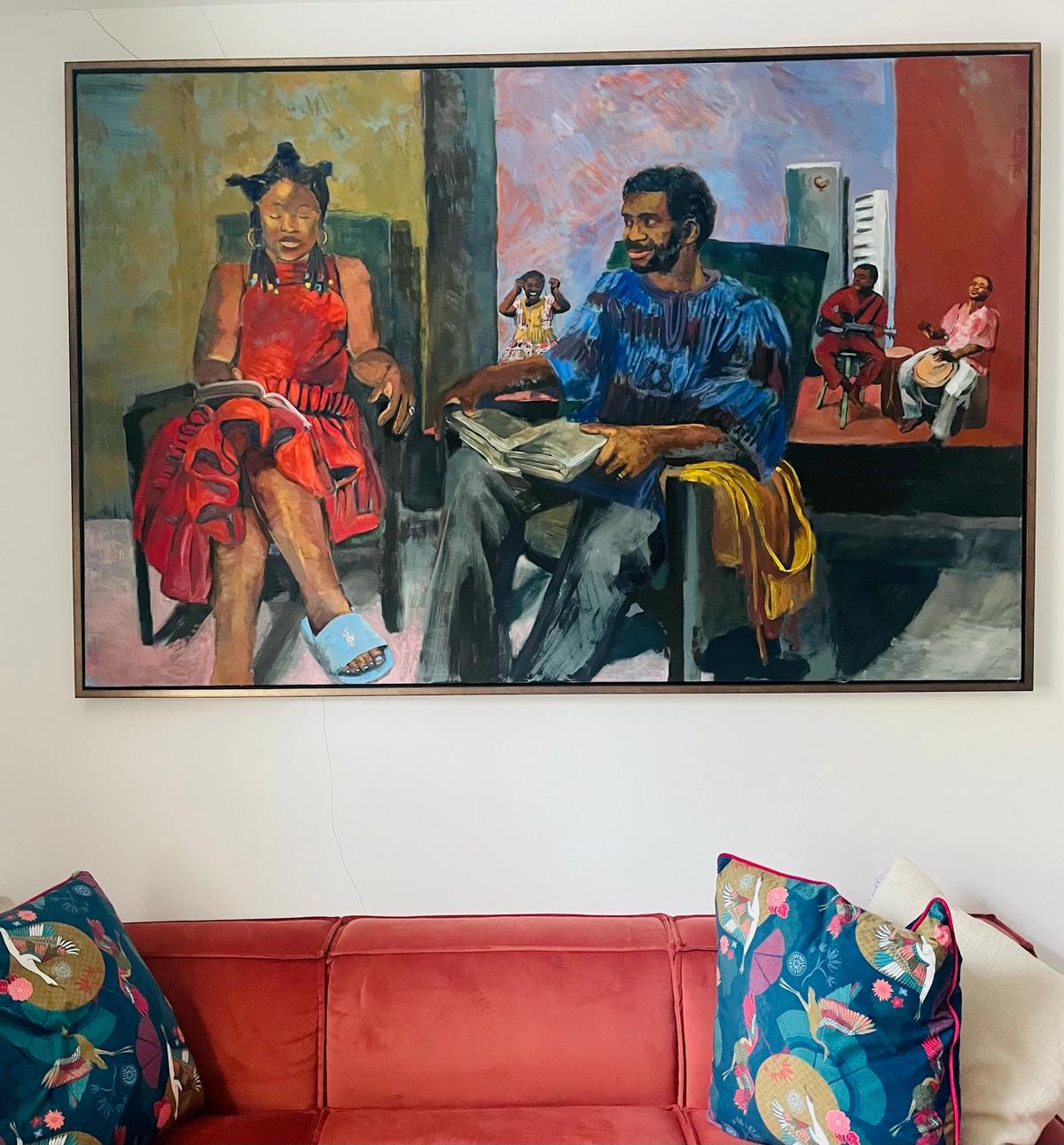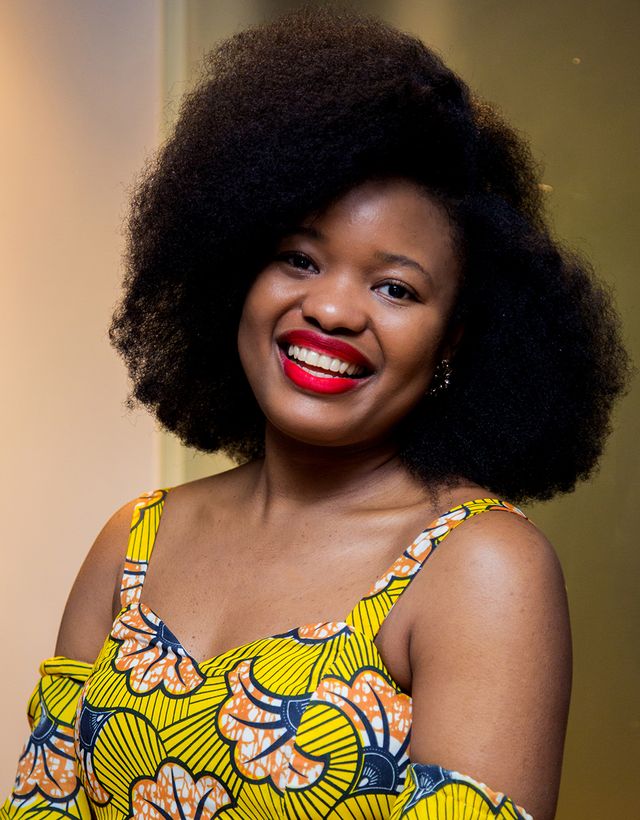Who is an art collector? It’s hard to say, because the art cognoscenti doesn’t just bestow the title on anyone. A fashionable gallerist once told me: “There’s a difference between someone who buys art and someone who collects.” When I humbly asked what the difference was, she resorted to abstractions more mysterious than a Jackson Pollock.
A collector is someone who has something called “an eye”, which is very different from the optical organs most of us possess. What is an eye? I asked. A sensibility, she replied. What is a sensibility? A certain je ne sais quois. At the end of this Socratic dialogue, it was established that a collector was who this gallerist (and a few like-minded friends) deemed a collector.
It is no wonder then, that most art collectors have imposter syndrome. I’ve read several collector profiles where the subjects insist that they are not art collectors. That title is much too lofty for them, they humbly protest as they pose in front of their favourite (or most expensive) artwork.
Last year, I commissioned my first artwork, and came one step closer to becoming a “real collector”. The work was painted by Antonia Caicedo Holguin, an artist I stumbled upon on Instagram.
She was a graduate student at the Slade and her grid showed portraits of friends and family done in pastel on paper. In one piece, the subject was staring into the distance with headphones on. In another, the subject was working intently on their laptop. These mundane scenes were rendered romantic by Holguin’s treatment of colour and form.

Antonia Caicedo Holguin’s A tempo (couple playing salsa maracas)
Courtesy of Antonia Caicedo Holguin
When I paid Holguin a studio visit, it turned out that she didn’t just have these smaller works on paper. She’d painted large canvases that she unfurled for me, one on top of the other, until I was standing ankle deep in art. Yet there was something constrained about these paintings that made me more drawn to her more recent, smaller works on paper.
As she talked about her process, she explained that she was trying to transfer the expressive style she’d achieved on paper to her larger works on canvas. I decided to wait and see how her practice developed. I bought a small work on paper and left.

Holguin’s work on paper Studio Shoes, which Onuzo purchased
Courtesy of Antonia Caicedo Holguin
A month later, I went to the Slade graduate show, and saw that Holguin had achieved her aim. She’d successfully translated her expressive style onto a work on canvas. In just one month, she’d taken a great leap forward in her practice.
Sadly, the piece I wanted was too big to fit in our home. I know real collectors are not constrained by such trivial details as wall space (many have no shortage of walls) but I did not have such room and want to live with the art I buy, not lock it up in storage somewhere. So I came up with the radical solution of commissioning a piece to fit the wall space I have. I’d never done anything like it before, and as I discussed details with Holguin, I realised that this would be a great leap forward for me in my collecting journey.
Holguin’s brief was loose. Painting multiple subjects was something she was already exploring and so I provided dimensions and asked that the artwork have a group of characters. At the end of our meeting, Holguin asked a simple question.
“Do you and your husband want to be in the painting? Since there’s going to be multiple people in the piece, I can slot you in somewhere.”
The siren song of vanity called to me. Grand patrons of the arts have long commissioned artists to make their portraits. I’m no grand patron. My pockets are too shallow, but I liked the idea of being in a Holguin tableaux. Who knew? Maybe one day, we’d be a small part of art history.
So I said: “Sure. Why not?”
We agreed on a fee and the next Saturday Holguin arrived at our house to make a pastel sketch of my husband and I. Suddenly, I felt self-conscious.
“How do you want us to pose?” I asked.
“Just do whatever you want,” she said.
In my head, I ran through a list of poses from art history. Hero pose, with my hands akimbo and my chest thrust out. Or, more dramatic still, military pose, seated on a rearing stallion with my sword raised. As I own no stallions, and I have no sword, I settled for the next best thing, which was seated in an armchair with a book. My husband sat next to me and Holguin sketched us.
The process was interesting to observe. I’d met Holguin twice at this point, but throughout the process of capturing us on paper, she looked at my husband and I in a clinical way I had not yet seen. Her gaze was intense but also impersonal, like we were two blocks of marble, or two trees.
When the sketches were done, my husband and I both had a peep. Even these rough drawings had a vibrancy to them.
“I wonder where you’ll slot us in,” I said to Holguin.
“I’m still thinking about it,” she replied.
In the month it took Holguin to make the full painting, we didn’t have any contact. When the work was ready, I drove down to her studio to see it.
“It’s a little bit different from what we agreed. But I felt I had to do what was right for the canvas,” Holguin said when I arrived. That gave me my first inkling that I was in for a surprise. Maybe my husband and I had been axed to fit the composition.
When I saw the painting, all intelligent remarks flew out of my head.
“We’re so big!” I exclaimed.
Rather than axing us, my husband and I filled most of the canvas. The work carried all of Holguin’s vigour and sophisticated treatment of colour—but for the first ten minutes I couldn’t get over how prominent we were in the composition.
“Do you like it?” Holguin asked nervously.
It was then I remembered I was standing in front of the first commission taken on by this young artist, barely out of art school.
“It’s amazing.” I said. And it was. She’d captured the essence of my husband and I. “And it wasn’t what I was expecting.”
“I can try and change it,” Holguin said.
“No!”
She’d done what she felt was right by the piece, and you an’t ask any more from an artist. I paid the balance of the commission (in monthly instalments as agreed) and took the piece home with me a few days later, where it still hangs proudly in our living room.
Does this piece now make me a collector? I’ll leave that to you to decide. In the end, this commission bestowed more on me than a title. I gained insight into an artist’s process in a way I hadn’t done in all my previous years of buying art.
If you’re thinking of commissioning an artist, go ahead, especially if it’s an artist whose work you love and want to support. It will be one-of-a-kind experience and the result will be unique to you. Moreover, if the artist is true to their vision, whatever they make will be amazing. It just might not be what you were expecting.



